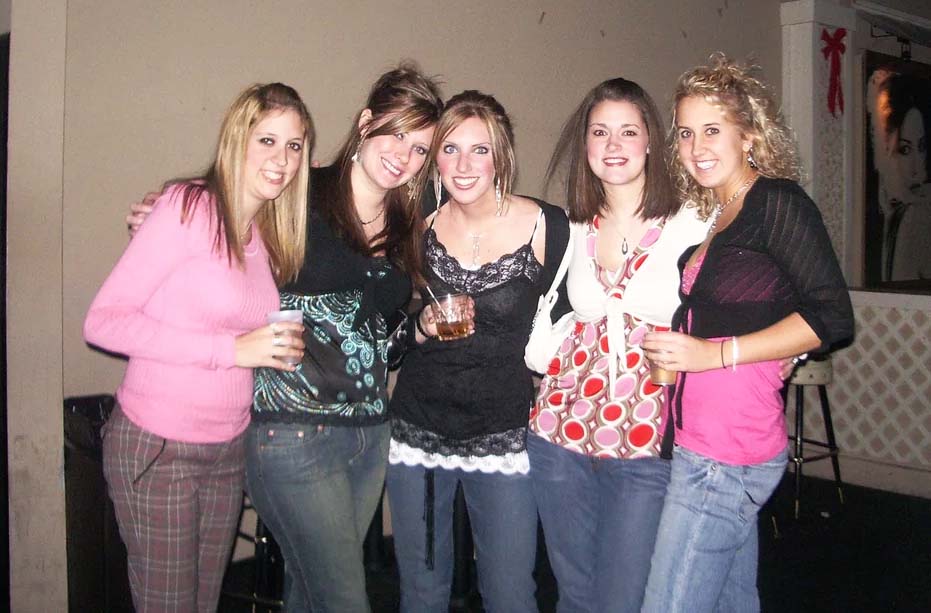 The 2000s was a decade that left behind some of the most memorable—and sometimes questionable—fashion moments in recent history.
The 2000s was a decade that left behind some of the most memorable—and sometimes questionable—fashion moments in recent history.
It was an era defined by experimentation, blending old and new, and embracing bold statements that reflected the rapid globalization and technological boom of the time.
From the futuristic aesthetics of Y2K to the casual wear influenced by hip-hop and indie culture, the decade’s style became a true patchwork of cultural and social trends.
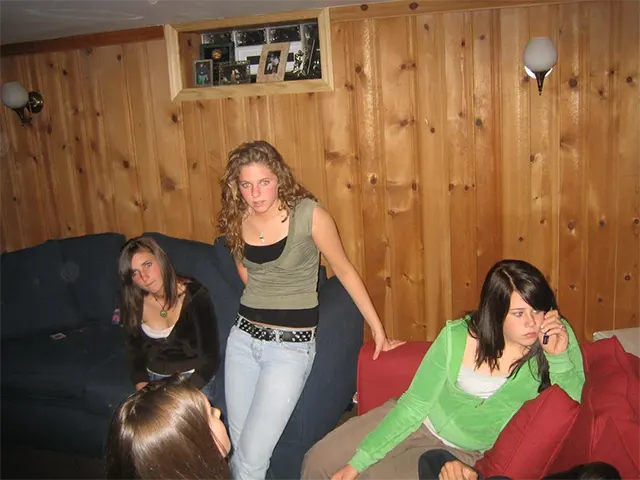 A Global Mash-Up of Style
A Global Mash-Up of Style
Fashion in the early 2000s carried the spirit of a global mash-up. Vintage revivals, bohemian-inspired clothing, and the influence of music-based subcultures all collided in a single wardrobe.
Hip-hop fashion, with its oversized silhouettes and bold branding, dominated youth culture at the beginning of the decade, while indie-inspired retro styles gained popularity later on.
Meanwhile, adults leaned toward “dressy casual,” a style that mixed comfort with a polished look—perfect for workplaces that were becoming increasingly informal.
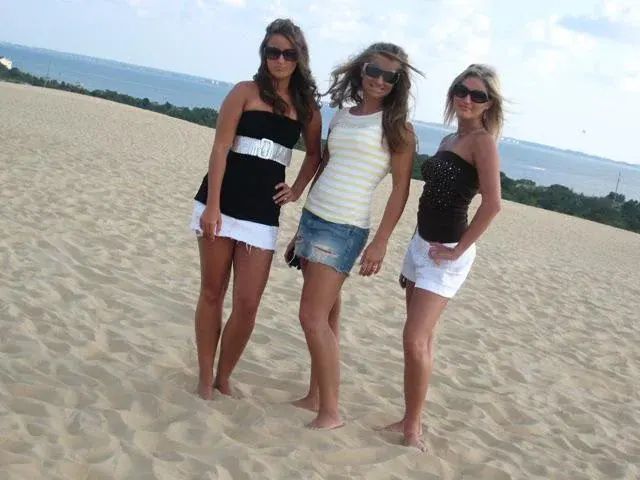 Globalization also played a major role. Clothing and accessories inspired by Middle Eastern and Asian traditions began to find their way into mainstream stores across Europe, North America, and Australasia.
Globalization also played a major role. Clothing and accessories inspired by Middle Eastern and Asian traditions began to find their way into mainstream stores across Europe, North America, and Australasia.
The mix created a unique landscape where it was normal to see boho skirts, embroidered tunics, and streetwear-inspired sneakers all in the same outfit.
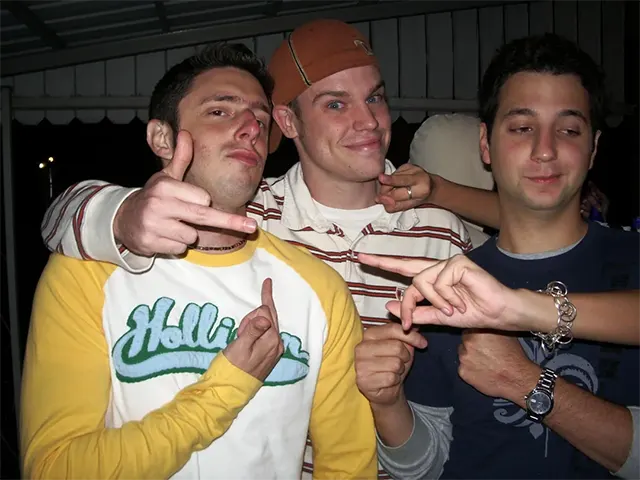 The Rise of Fast Fashion
The Rise of Fast Fashion
Perhaps the biggest shift of the decade was the explosion of fast fashion. Retail giants like H&M, Zara, and Forever 21 capitalized on consumers’ hunger for affordable runway-inspired looks.
Stores churned out new collections at lightning speed, making high fashion accessible to the average shopper.
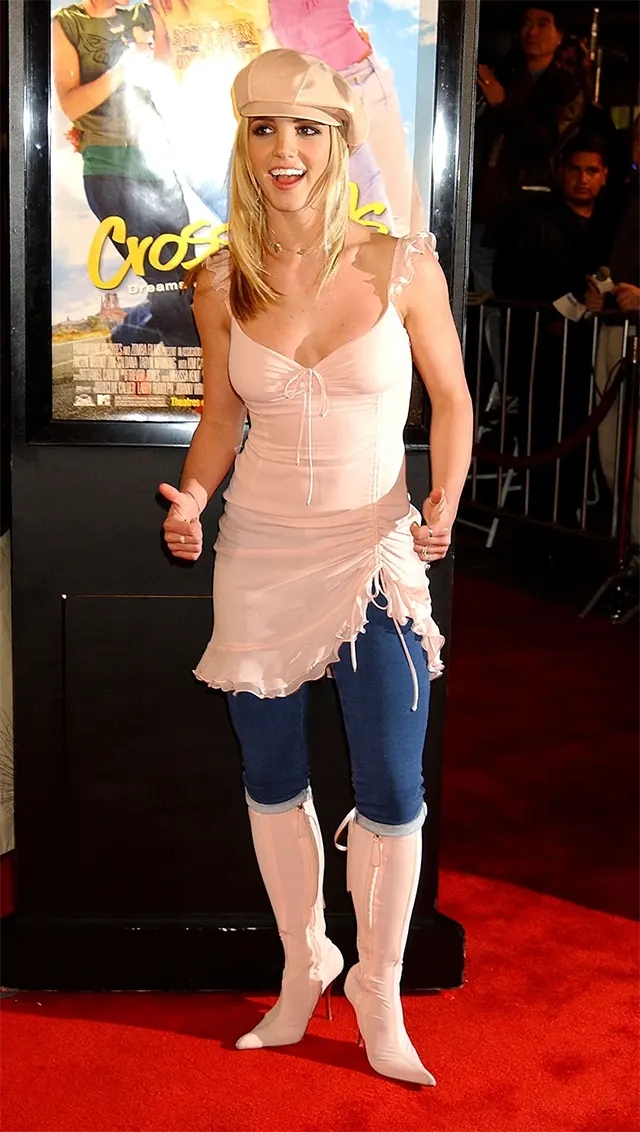
Britney Spears.
Target even launched successful collaborations with established designers, a move that reshaped the retail market by bringing “luxury” design into everyday wardrobes.
This rise of inexpensive, trend-driven clothing not only democratized fashion but also created a culture where wardrobes turned over faster than ever before.
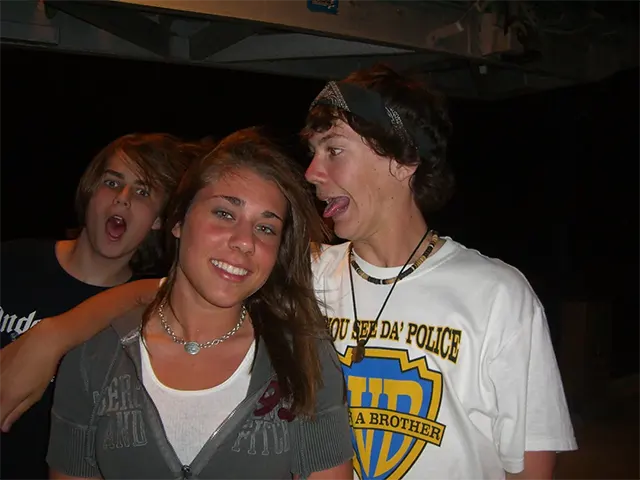
Y2K and the Technology Effect
Technology didn’t just change how people shopped—it also shaped how they dressed. The Y2K aesthetic, named after the infamous millennium bug, embraced futuristic minimalism.
Metallic fabrics, shiny blacks, silver accents, and plenty of straps and buckles reflected the sleek design of gadgets that were just entering everyday life.
When Apple released the iPod in 2001, its white earbuds quickly became an accessory in their own right, symbolizing both status and modernity.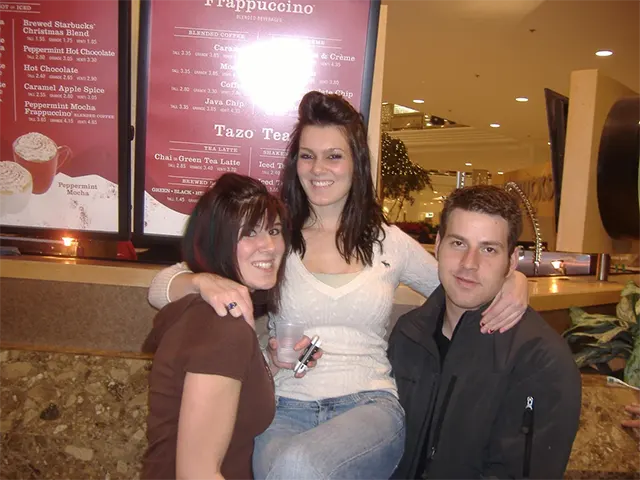 Y2K fashion included mesh tops, halter necks, sequined pants, metallic handkerchief tops, wraparound sunglasses, and rhinestone-studded concert tees.
Y2K fashion included mesh tops, halter necks, sequined pants, metallic handkerchief tops, wraparound sunglasses, and rhinestone-studded concert tees.
Designers like Karen Walker and Easton Pearson introduced pieces that sparkled—literally—with sequins, embroidery, and pearls. It was fashion meant to shine under club lights and stand out in a digital age.
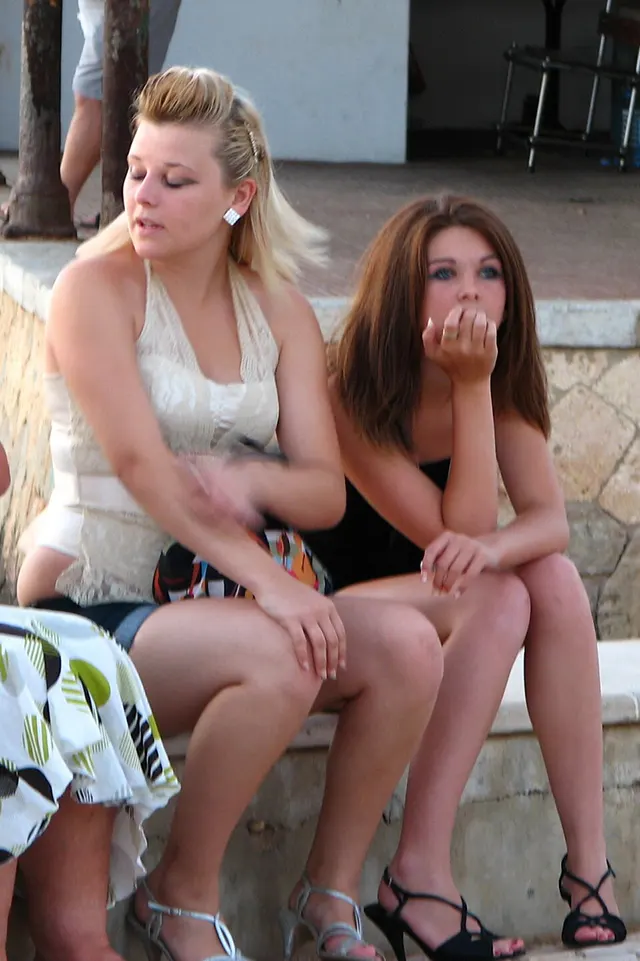
Young women in Portugal with straightened hair and thick makeup in 2007.
Carrying Over the 1990s
The influence of the late 1990s lingered well into the early years of the new millennium. Stars like Britney Spears and Christina Aguilera set the tone with crop tops, low-rise jeans, and cargo pants.
The “military look” carried over from the late ’90s, though it was soon joined by what some described as a dystopian edge—darker, more dramatic silhouettes mixed with playful, revealing pieces.
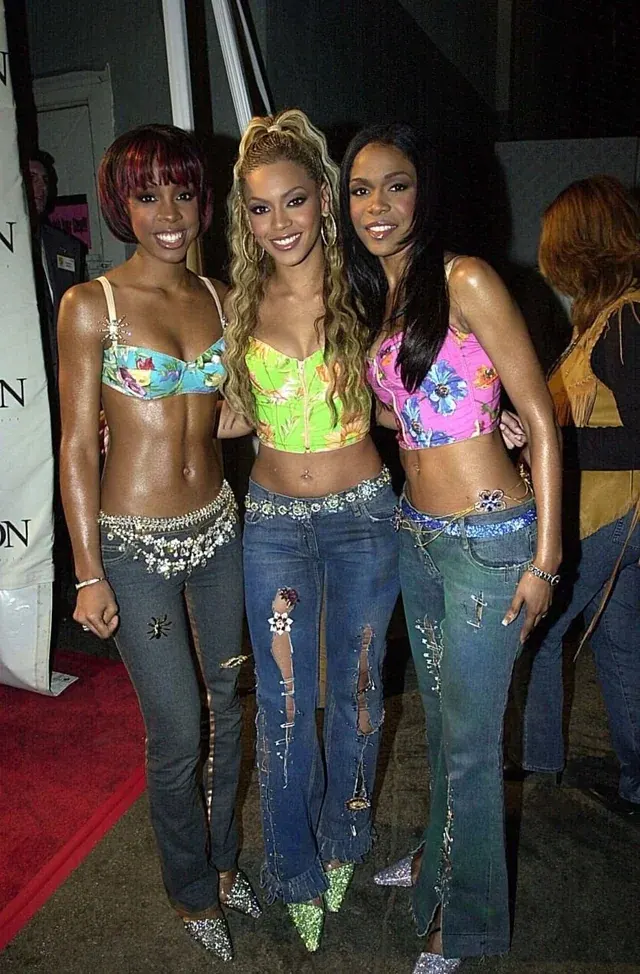 Women embraced cowl-neck tops, hoodies, hip-hugger jeans, white denim, daisy dukes, and whale tails peeking above low-rise pants.
Women embraced cowl-neck tops, hoodies, hip-hugger jeans, white denim, daisy dukes, and whale tails peeking above low-rise pants.
Cargo pants—often made of satin or velvet—added variety to wardrobes, while thong underwear and brightly colored tights became unexpected statement pieces.
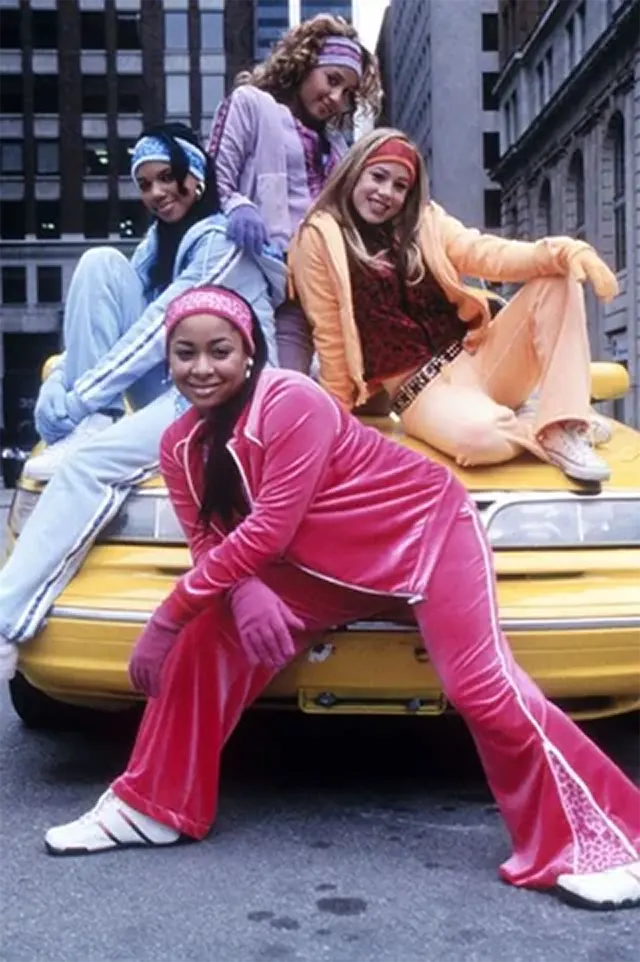
Denim Dominance
No other fabric defined the decade like denim. Jeans were worn everywhere—casually at the supermarket, dressed up for nights out, and even seen on the red carpet.
Distressed denim surged in popularity from 2001 to 2008, featuring heavy embroidery and embellishments. Low-rise and flared cuts dominated, often paired with short tops or layered looks.
In the UK, fashion took a different twist, with skirts layered over trousers, floral print dresses, and bold color palettes featuring black, purple, and pink.
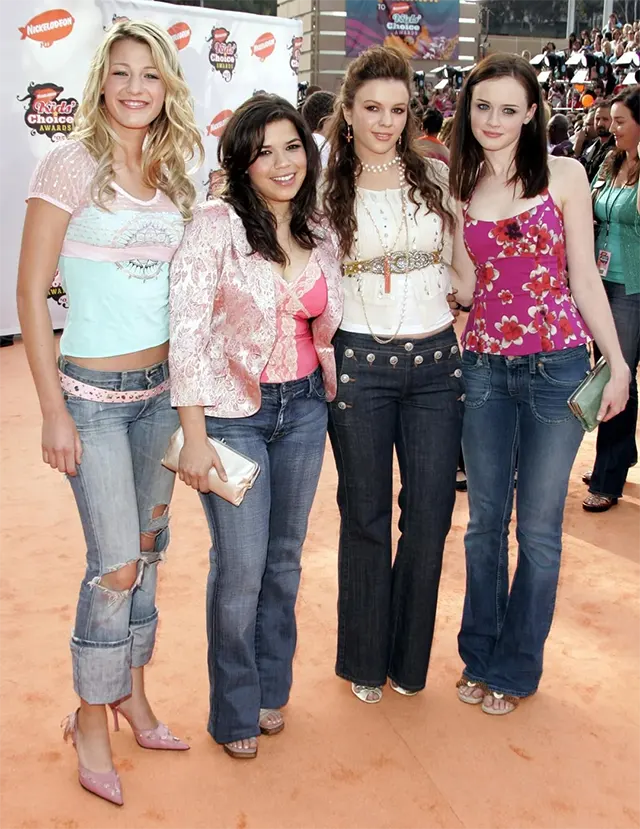
Mid-2000s Trends
As the decade moved on, certain staples became universal. Denim miniskirts, tracksuits (made iconic by brands like Juicy Couture), pleather trench coats, puffy jackets, and polo shirts with popped collars were everywhere.
Footwear also defined the look: sneakers like Skechers, Heelys, Adidas, Nike, and Reebok were popular, while knee-high boots with spiked heels or chunky square toes offered more dramatic alternatives.
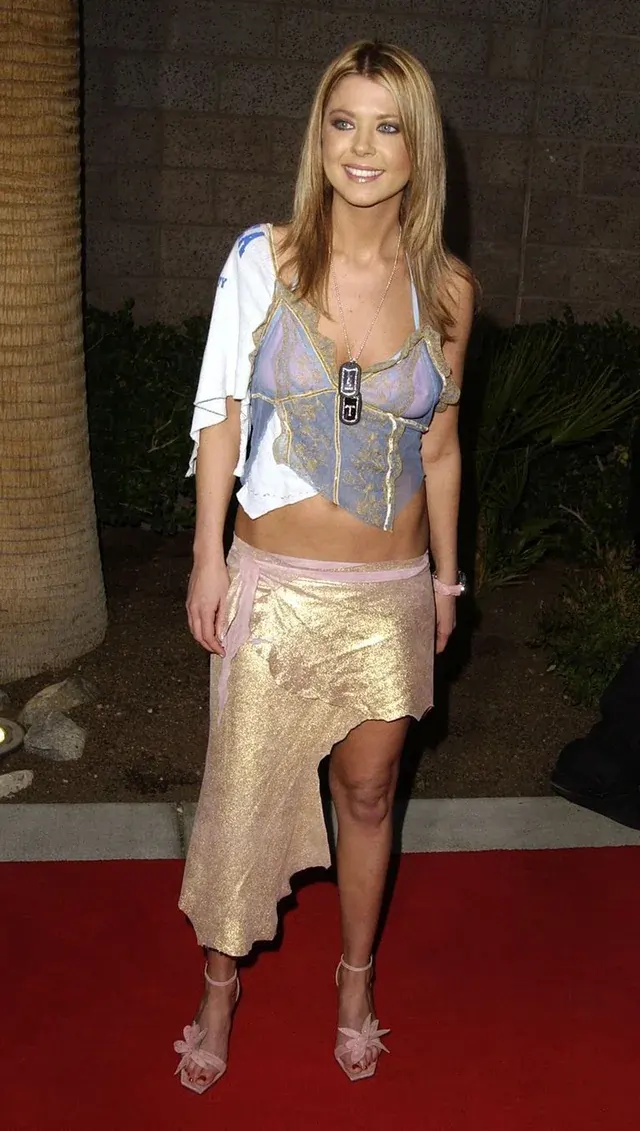 Women’s mid-2000s wardrobes also leaned heavily on embroidered low-rise jeans, yoga pants, jean shorts, tube tops, and longer tank tops layered under blouses.
Women’s mid-2000s wardrobes also leaned heavily on embroidered low-rise jeans, yoga pants, jean shorts, tube tops, and longer tank tops layered under blouses.
Vintage-inspired pieces returned in the form of 1940s dresses, 1960s-style peacoats, and paisley-print boho dresses.
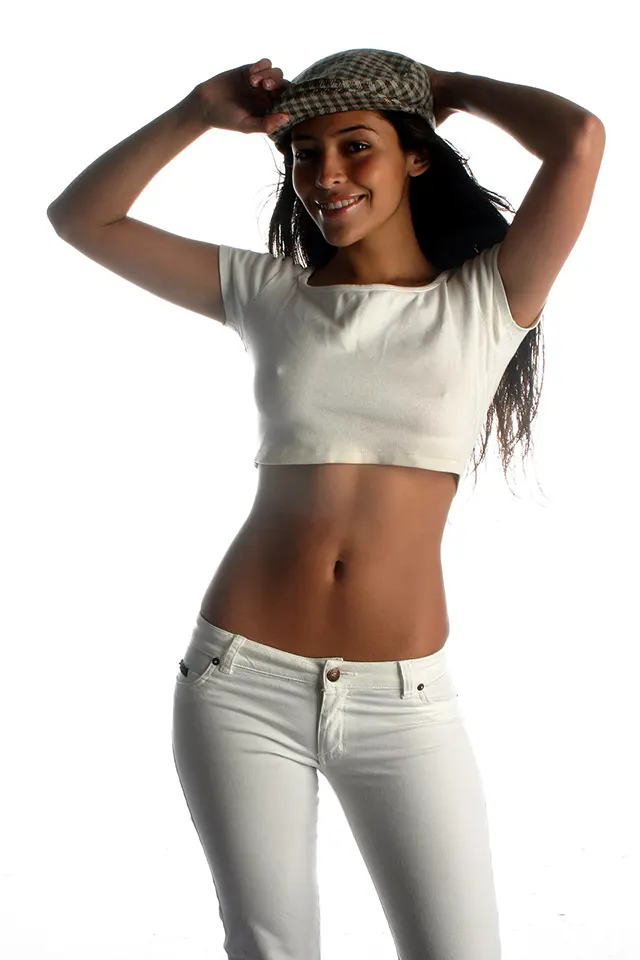
Model in 2005 wearing low-rise jeans, a newsboy cap, and a belly shirt.
A 1980s Revival
By the late 2000s, nostalgia took center stage. Fashion revived the boldness of the 1980s and early 1990s, with neon colors, acid-wash skinny jeans, slap bracelets, ballet flats, animal print headbands, and brightly patterned tops.
Leggings, oversized sweaters, and translucent plaid shirts worn over camisoles brought layering back in new ways.
Footwear trends shifted to gladiator sandals, riding boots, and even neon leg warmers, proving once again that no era of fashion is ever truly gone—it just comes back with a twist.
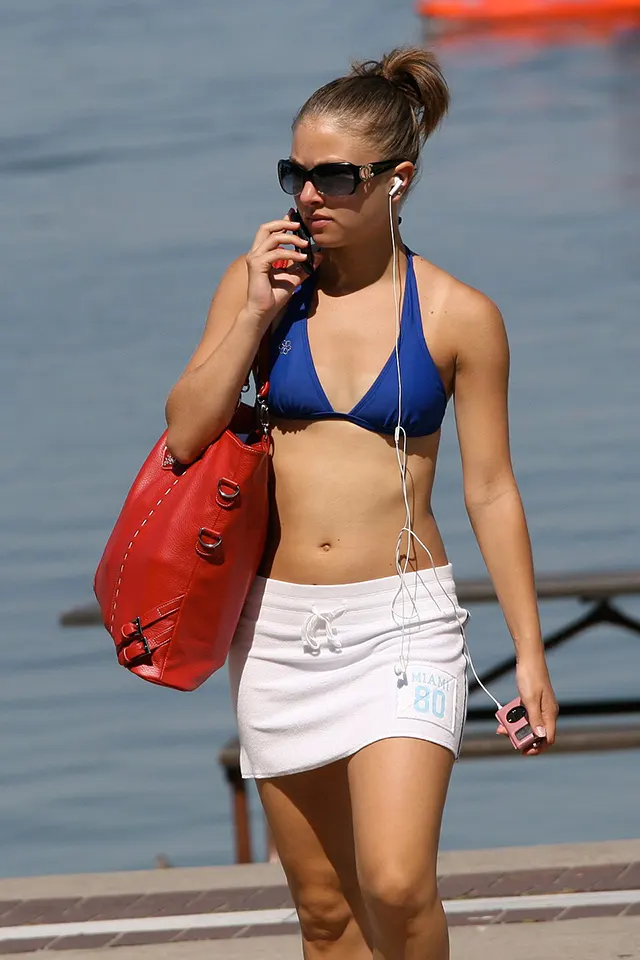
Young American woman in 2007 wearing a white miniskirt, a blue bikini top, and sunglasses.
Men’s Fashion in the 2000s
While women’s fashion often stole the spotlight, men’s style in the 2000s had its own defining moments.
Hip-hop fashion led the charge with oversized jeans, baggy T-shirts, fitted caps, and sneakers—styles popularized by artists like Jay-Z, Nelly, and 50 Cent.
Branded sportswear, particularly by Adidas, Nike, and Rocawear, became everyday attire for young men.
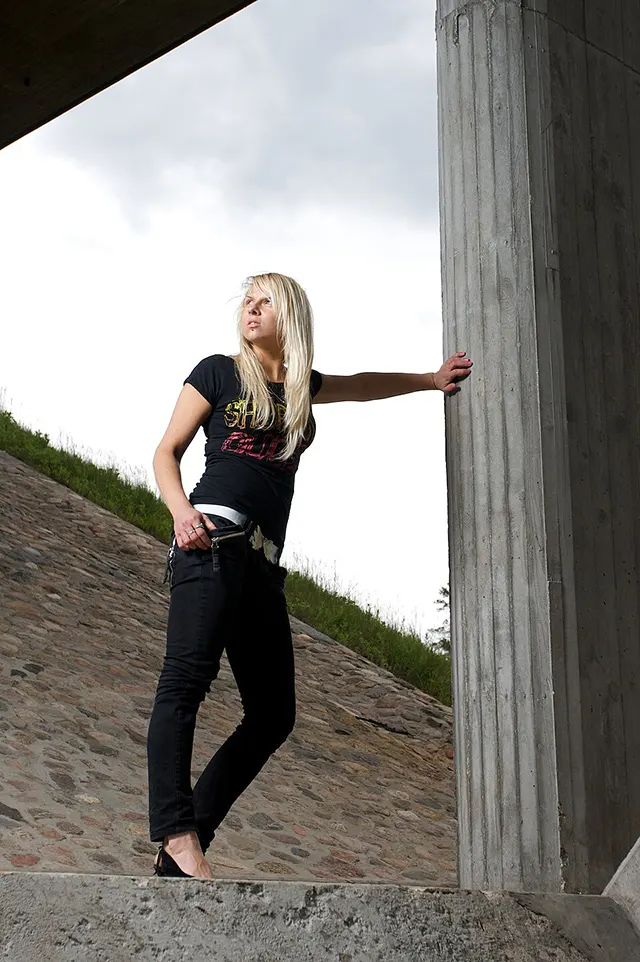
Young woman in summer 2009 wearing all black clothes.
At the same time, the “metrosexual” look gained traction, with men embracing grooming and sleeker, more fitted clothing. Slim-cut jeans, button-down shirts, blazers, and designer belts reflected this shift.
The indie and alternative scenes influenced men’s fashion too, with skinny jeans, vintage band tees, hoodies, and Converse sneakers becoming staples.
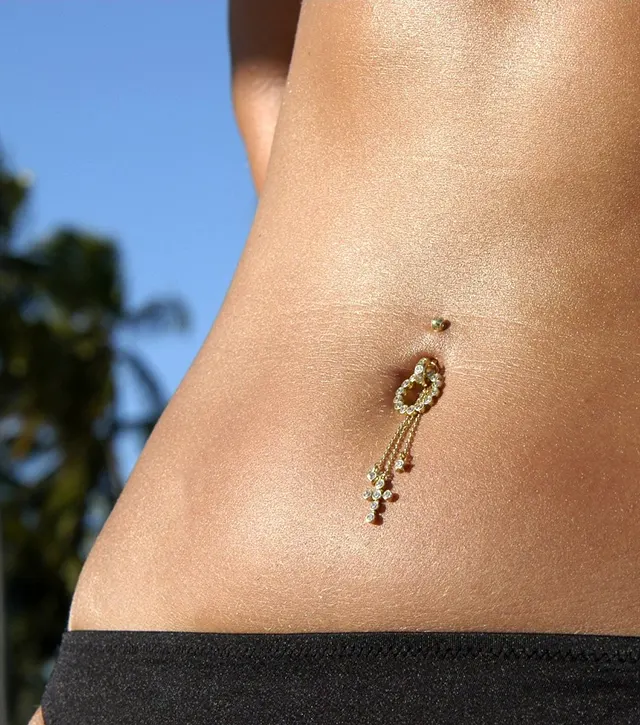
Navel piercings were popular from 1995 all the way to 2007/2008.
For formal or semi-formal occasions, the “dressy casual” trend translated into untucked button-down shirts worn with blazers, often paired with dark denim.
Cargo shorts, polo shirts with popped collars, and puka shell necklaces were also emblematic of the era’s casual male style.
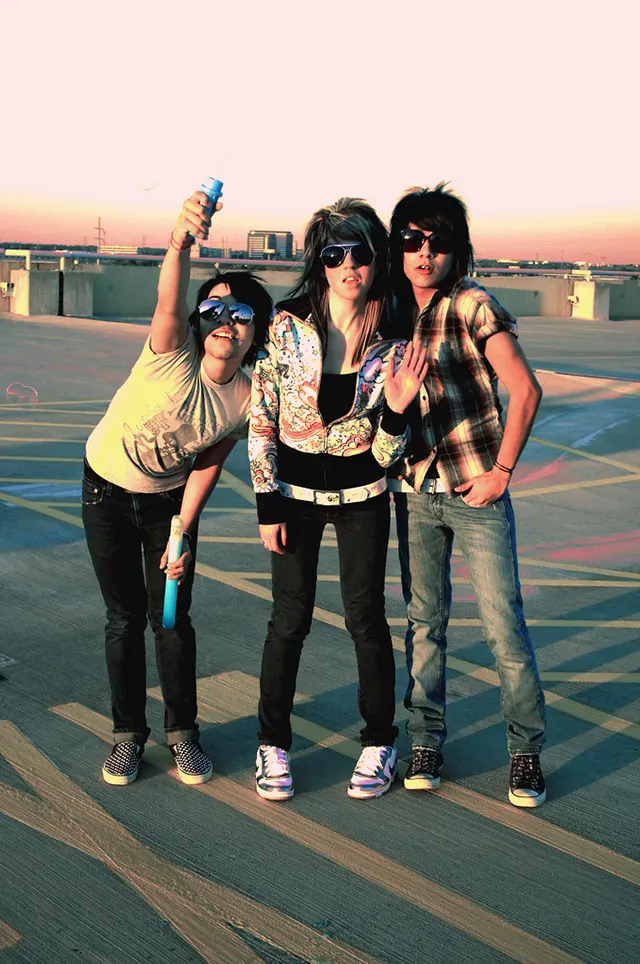
Scene kids, 2008
Scene Kids
During this decade, one of the most visible youth subcultures in the US, UK, and Australasia was the “scene kids.”
Their style drew inspiration from grunge and skate-punk fashion, starting with tripp pants, stripes, tartan, spiky hair, Converse, Vans, and trucker hats.
Over time, the look evolved into something more colorful and androgynous: flat, straight hair often dyed bright shades, skinny jeans, cartoon-print hoodies, shutter shades, checked shirts, and bold neon accessories.
The term “scene queen” originally came from 1970s glam rock as a slur for straight musicians posing as gay, later used against poseurs in goth, punk, and metal circles.
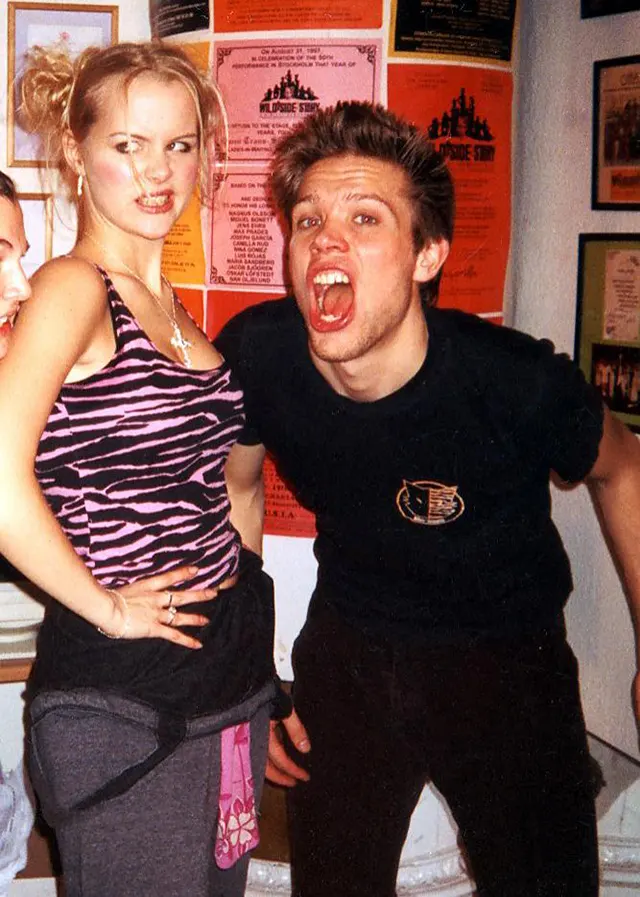
Swedish actors in 2002 sporting various early 2000s fashions and hairstyles.
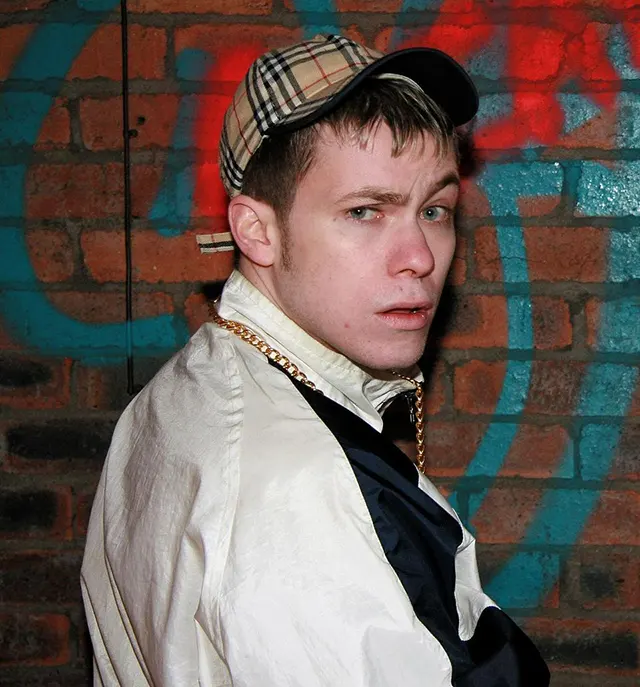
British “Chav” wearing tracksuit and baseball cap.
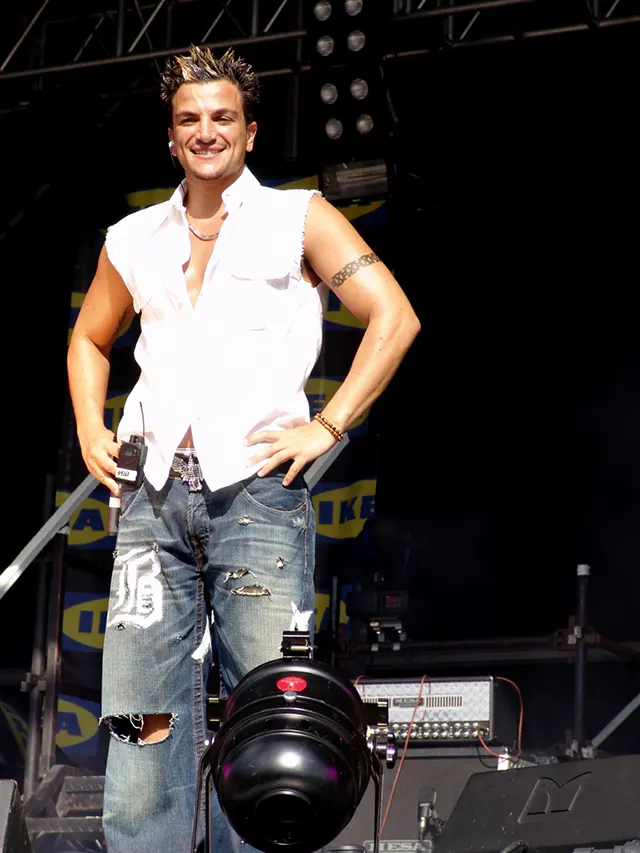
English-Australian singer Peter Andre in 2004 wearing ripped and sandblasted baggy jeans influenced by surfer and hip-hop fashion.
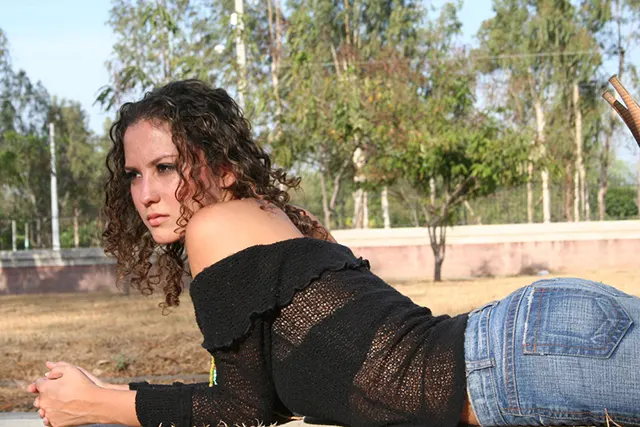
Girl with curly brown hair sporting an off-the-shoulder top, a carry over from the early 2000s.
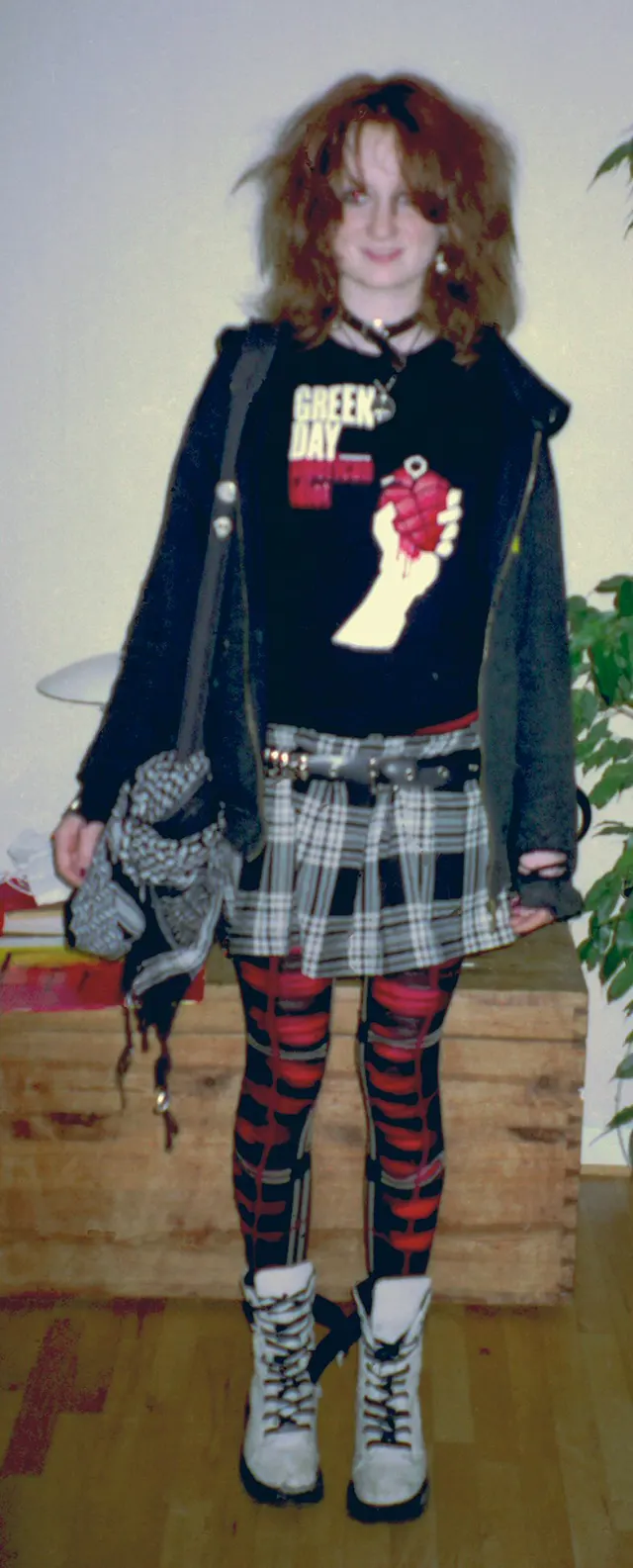
German Mosher, the more punk-like incarnation of scene, early to mid-2000s.
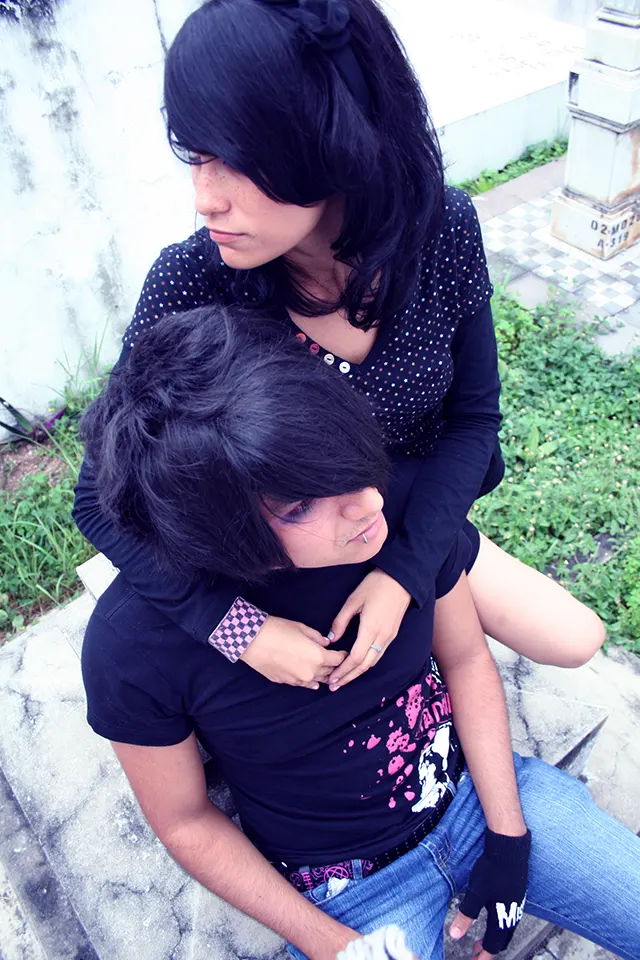
Ecuadorian emo kids from the late 2000s.
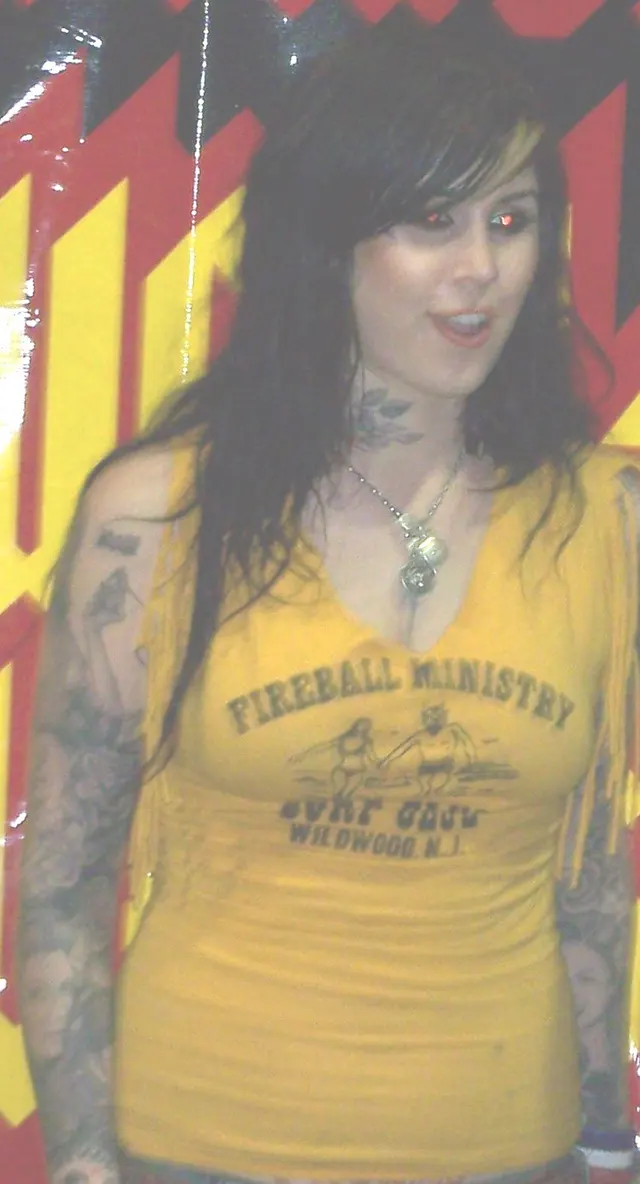
Tattoos and extreme body piercings went mainstream in the late 2000s.
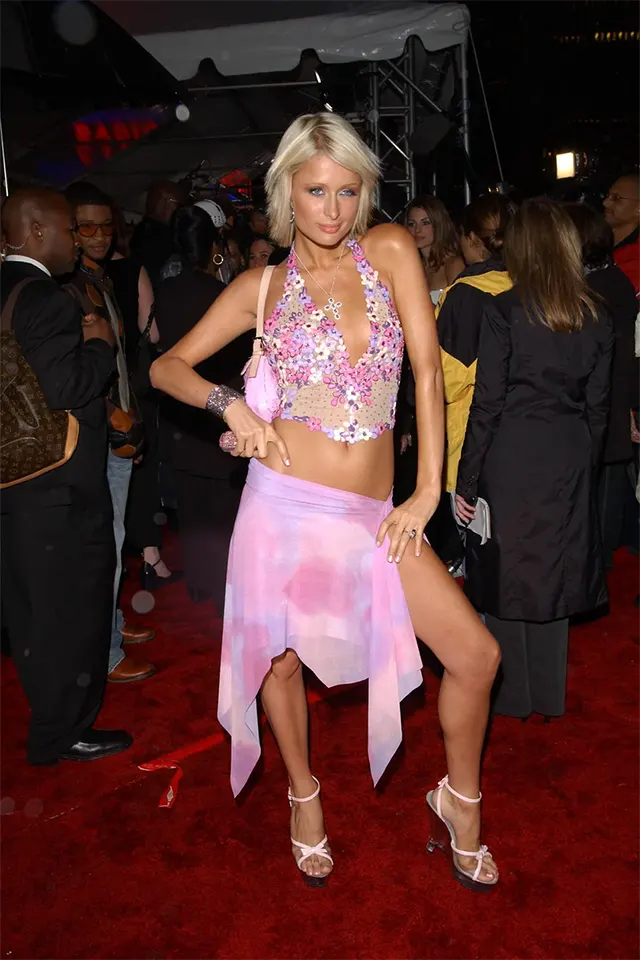
Paris Hilton.
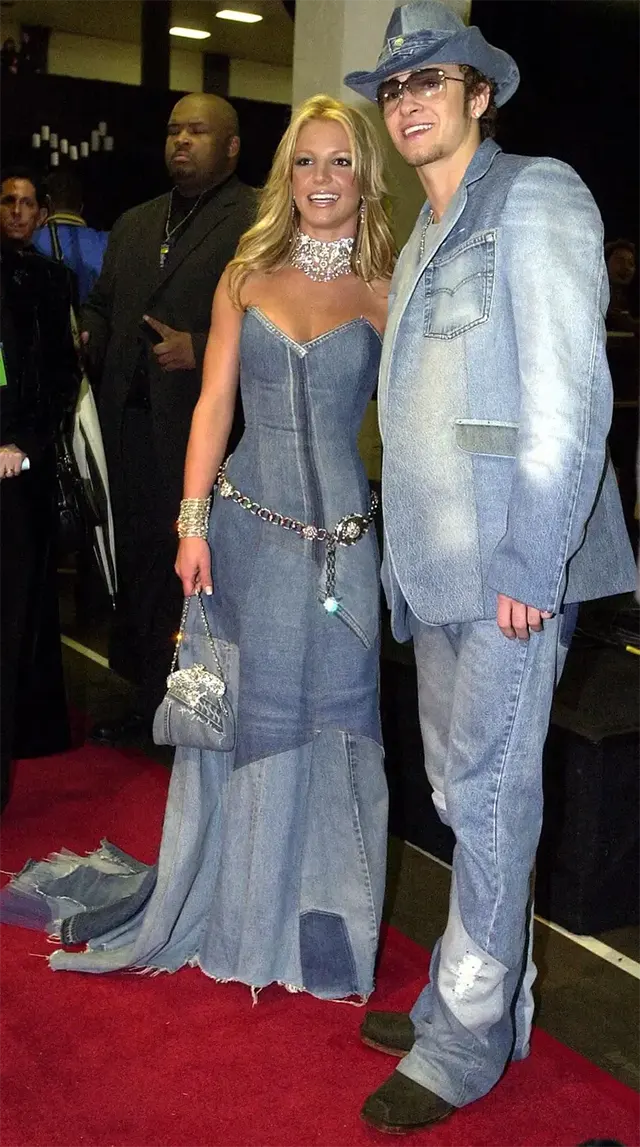
(Photo credit: Wikimedia Commons / Flickr / Britannica / Pinterest).